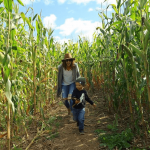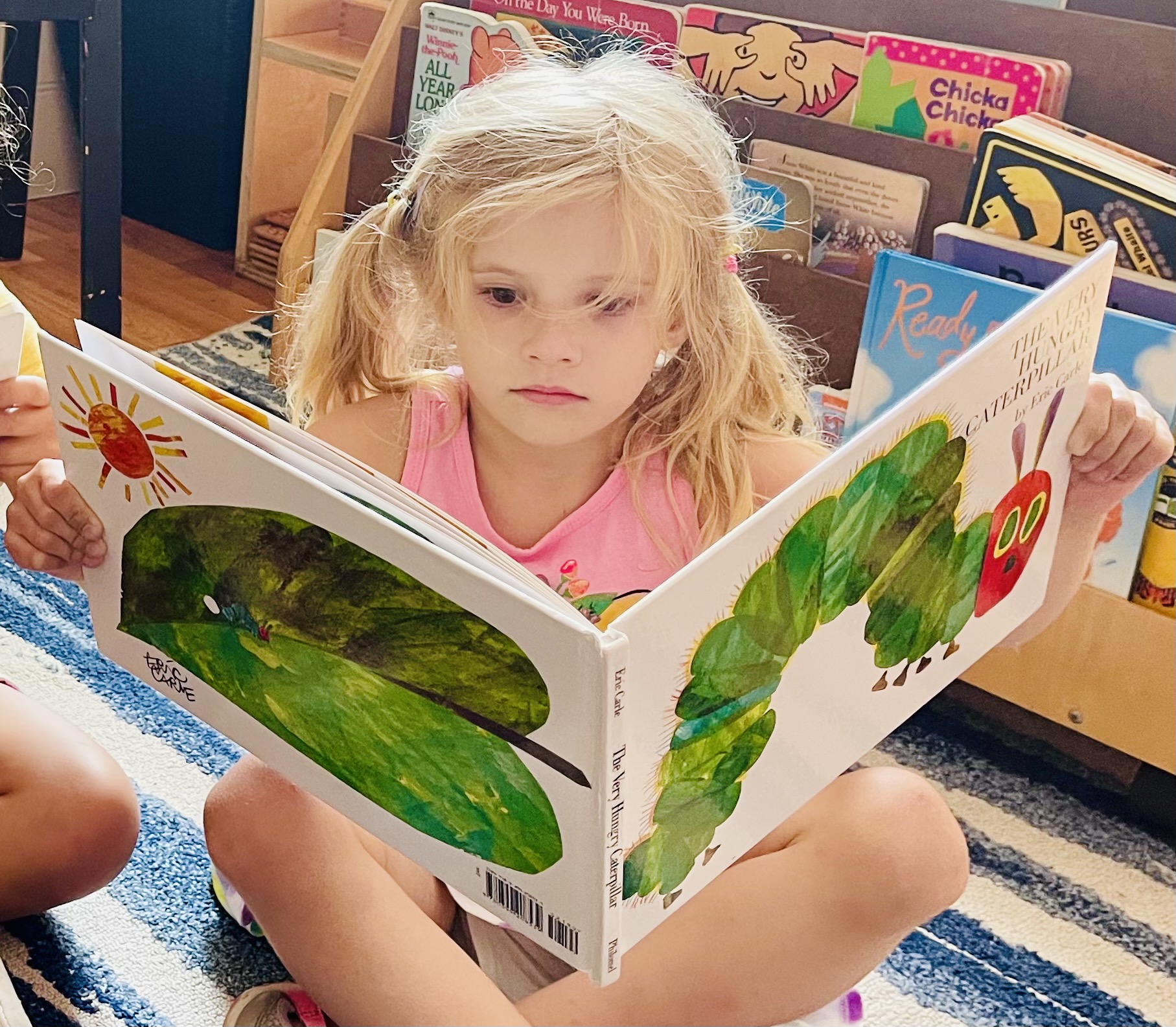Sleep Safety Tips for Infants
SLEEP SAFETY TIPS FOR INFANTS
Parents often ask us about sleep safety for their children and especially for infants. Here’s our top sleep safety tips for infants:
Safe sleep is as easy as A B C

Alone
- Don’t sleep in the same bed as baby.
- The safest place for baby to sleep is the same room as their caregiver.
- You can place crib next to the bed.
- Keep the room smoke and pollutant-free.
- Keep the room cool to prevent overheating.
Back
- Always place baby on their back to sleep.
- Help to prevent flat spots on the head by changing sleep direction daily and it also helps them to build strength by activating muscles on both sides of their neck.
- Because baby sleeps on their back, Tummy Time is essential! Tummy Time should begin as soon as baby comes home.
Crib
- Baby should always sleep in a crib.
- Use a crib or bassinet that meets current safety standards.
- Provide your baby with a firm sleep surface.
- Keep crib empty. No toys or blankets!
- Remove loose bedding, bumpers, and toys as they can put safety as risk.
- Avoid using sleep positioning devices.
To learn more about Tummy Time, Sleep Sacks and healthy sleep for babies. Click here.
Sleep Tips for Young Children: How to get a good night’s rest
Sleep Tips for Young Children: How to get a good night’s rest
Some say “never wake a sleeping baby” but what if the baby won’t sleep at all? What if they sleep too much? Knowing how much sleep your child needs can be confusing because it seems everyone has an opinion on the topic and there is so much information to sift through about sleep tips.
Keep in mind that what works for some may not work for all. While some of you may be simply exhausted because your child doesn’t sleep enough, other parents may be experiencing worry about children who sleep too much. Some children will naturally fall below the recommended or typical sleep amounts for their age group and can function well on less sleep. Some children may need extra sleep, but it’s something to monitor because that means less awake time to learn and play. You’ll want to check with your pediatrician if your child’s sleep needs are excessively high or low.
If these topics are keeping you up at night and your child too, you are not alone. Sleep is a big topic among parents and it’s important to remember to stick to the facts. Always use reputable sources of information online, books or consult with your doctor rather then using the advice in a mommy’s group, from a friend or family member. Although the latter may be a trusted source, it’s best to check on that advice with a professional to make sure it is sound.
How Much Sleep Do Children Need?
This chart is a general guide to the amount of sleep children need over a 24-hour period, including nighttime sleep and daytime naps.
| Infants (4 to 12 months old) | 12-16 hours |
| Toddlers (1 to 2 years old) | 11-14 hours |
| Children (3 to 5 years old) | 10-13 hours |
| Children (6-12 years) | 9-12 hours |
| Teenagers (13-18 years old) | 8-10 hours |
Here’s some handy sleep tips that may help your child (and you) get the sleep you need:
-
Establish a regular sleep pattern
Establishing a regular sleep pattern is important. It will help your child understand when it is time to sleep. Also, your child will have better sleep. Bedtime shouldn’t vary by more than an hour across all days of the week (even weekends) – whether your child has an early start the next morning or not. The same goes for waking time.
-
A consistent bedtime routine
It is good to have the same routine before bed each night. This will help prepare for sleep. Quiet activities are good, such as reading a book or having a bath or shower. In the half hour before bed, there are some things you want to avoid such as active games, playing outside, TV, internet or mobile phone games. These activities will stimulate the child and make it difficult to fall asleep.
-
Make sure the bedroom is comfortable
The bedroom should be quiet, comfortable, and dark. Some children like a night light. This is fine. Make sure your child sees the bedroom as a good place to be.
-
Bed is for sleeping, not entertainment
Devices and games will distract your child and are not good for their sleep. Keep them out of the bedroom. “Needing” to watch a screen to fall asleep is a bad habit. This can easily develop, but you don’t want it to happen.
-
Some foods can disturb sleep
A high intake of sugary or fatty foods has been linked with more restless sleep. Avoid sugary or high fat snacks before bedtime, as well as large meals. A small healthy savoury snack, one hour before bedtime, would be fine.
-
Take care with daytime naps
It is normal for young children to nap during the day. As your child gets older, they will need less sleep. This means they will need to nap less. The number and length of naps depends on your child. If your child is not going to sleep at a reasonable time at night, it may be time to shorten or stop daytime napping.
-
Exercise and time outside
Daily exercise is an important part of healthy living. It also promotes good sleep. Time spent in bright daylight does the same. Outdoor exercise achieves both these things. It’s best for young children to go outside for at least 2 hours throughout the day to get the physical activity they need. However, it is best to steer clear of vigorous activity in the hour before sleep.
-
Work with your doctor
If your child is sick or isn’t comfortable, their sleep will suffer. Some children suffer from specific sleep problems such as frequent nightmares, snoring or sleep apnoea. It is important that these problems are dealt with. If you think ill health is involved, discuss this with your family doctor.
-
Specific sleep-related issues in children
The Sleep Health Foundation has a range of helpful fact sheets for children with sleep issues. These include tips on sleep issues for children with ADHD (see ADHD and Sleep in Children) or autism (see Autism in Children and Sleep), as well as more general topics such as bedwetting (see Bedwetting), childhood snoring (see Childhood Snoring and Sleep Apnea) and behavioural problems with settling to sleep (see Behavioural Sleep Problems in School Aged Children).
Sleep is important, not only for your child’s well-being, but yours too! For more information about how we promote children’s well being, check out our programs!
6 ways to raise compassionate kids
6 ways to raise your children to be giving, caring and compassionate kids
How do you teach your child to be compassionate? This may sound like a difficult task, especially when you may have a hard time even getting them to share. Here are a few ways to you can begin to instill this positive character trait.
1. RECOGNIZE AND AKNOWLEDGE GOOD ACTS
Positive reinforcement works well with kids. Encourage your child’s efforts to give back or share with others. If you see your kids being generous even in the smallest way, praise them and acknowledge the gesture.

2. LEAD BY EXAMPLE
Kids are visual learners, and the best way to teach them about giving back is by modeling that behavior yourself. You have to give to teach your kids to give.
3. BEING A GIVING FAMILY
Along with setting a good example for your children, have conversations about giving. Be mater of fact about it. Use phrases like “We give to others because we can.” Explain to them why you’re giving time or money to a particular cause and explain why. Actions speak louder then words and there’s no better way to teach kids about giving back than through action.

4. MINDFUL MONEY CHOICES
Teaching your children about setting aside money to give to important causes is the key to raising socially conscious kids. This is also a great well to instill self-regulation and prevent impulsiveness. Along with talking to them about money, teach your children about the value of using a portion of their money to give back to the community and donating to charity.
5. KINDNESS AND TIME ARE EQUIVILANT TO MATERIAL THINGS
Many of us are not able to donate money to charity but that doesn’t mean we can not still teach and instill generosity.
Teach your children the value of giving their time and energy to others. The value of kindness and even the generosity of a smile, opening a door or helping someone pick up something they have dropped holds so much value. Teach your children not to hesitate to jump in and help someone in need.

6. BE A SAFE PHILANTHROPOIST
It’s always important to teach children safe perimeters with respect to giving. There are always reasonable safety concerns to consider when giving whether it be money, time, gestures, material items or food.
A few safety tips to consider sharing based on your child’s age or development
The STOP, THINK, ASK policy is a good one to instill in your children of any age because as we know even kind-hearted adults can be but at risk if they are not careful. Here’s some safety considerations:
• Sharing food can be dangerous because some people have allergies (ask an adult first)
• Smiling at a stranger or saying hello is safe but ask an adult before talking to or helping a stranger
• Ask an adult to help you choose a charity before giving money or valuables.
These tips will go a long way to raising compassionate kids.
For more information about how we foster compassion through our curriculum, click here.
How to Help an Extreme Picky Eater: 6 Simple Steps
How to Help an Extreme Picky Eater: 6 Simple Steps
Parents often ask us for strategies and tips to help with a picky eater. Many children go through phases when they become picky about what they would like to eat. It’s usually a sign that they are growing in independence, but I’m sure we can all agree that it can be very frustrating! After all, as parents and educators, we just want to make sure that our little kiddos are getting enough nutrition.
These 6 tips on how to help an extreme picky eater might feel like a lot if you’re just getting started. Instead of trying to tackle them all at once, identify just one area to start before moving on to the next.
1.Watch what you say
“Picky” might be an okay word to describe the trends you’re noticing with your child’s eating, but it’s not a description we want your child to internalize. If your child comes to learn that they are viewed as “picky”, it’s more likely that they will continue to demonstrate picky habits.
Instead of using the word “picky eater” to describe how they eat, try to empower your child and help them adopt a growth mindset when it comes to their eating.
2. Adjust your expectations
You’re going to be working HARD on helping your extreme picky eater. You will be putting in a lot of thought, effort, and time. That is AMAZING! Your child is lucky to have a parent who wants to make eating easier for them!
The thing is, your child is eating the way they do for a reason. Often there is no quick fix. Even when you’re doing everything right it can still take a while for your child to feel comfortable trying new foods.
This is for a few reasons.
First, your child likely has a lot of practice eating the way they do. Their eating choices have become a habit. It can take a while for them to learn that they can comfortably and confidently eat a variety of new foods.
Second, average young eaters need around a dozen exposures to a new food before they decide to eat it. Extreme picky eaters might need twice or more exposures before feeling ready to eat. That’s a lot of time and effort on your part!
Be patient and persistent. Don’t assume that just because something you tried a few times hasn’t worked YET that it won’t work at all.
I’m sure you’ve heard the saying that the definition of crazy is doing the same thing over and over while expecting different results. Ignore that! This is one situation where you want to keep trying!
3. Regularly serve new foods
Regularly serve your child new foods – even if they don’t eat them, even if they never eat them.
Serving your child new foods sends the message that they can eat new foods. It also gives your child the opportunity to try new foods when they are ready.
Ideally the new food can be on your child’s plate along with the rest of their meal. If they are uncomfortable having a new food on their plate, they can move it next to their plate.
4. Build their comfort
Most extremely picky eaters have strong food aversions and anxiety about eating new foods.
We want to break down your child’s reservations and instead help them feel empowered and capable when it comes to trying new foods.
Find out what motivates and interests your child. It might be cooking, learning about food in books or on TV shows, playing with food, doing arts and crafts, experimenting, or grocery shopping.
5. Create consistency with mealtimes
If there’s one thing I’ve learned in my work with extremely picky eaters it’s that they have a lot of anxiety when it comes to meals and anything related to eating. To help make this more comfortable for skeptical eaters, it’s helpful to create consistency with mealtimes.
Think about meal timing and everything that happens before, during, and after meals. Being consistent with meal times allows your child’s appetite to regulate and build so they can come to the table hungry and ready to eat. Being consistent with the mealtime routine helps your child know what to expect. Both can make eating easier and increase success when introducing new foods.
6. Don’t freak out
As a parent, I know how stressful it is when your child won’t eat. The thing is, getting upset about it doesn’t help your child. In fact, it can make eating even harder for them. Kids sense our stress and that’s the last thing we want at the table. Our anxiety feeds theirs. Our stress leads to their stress, and stress suppresses the appetite. That doesn’t make eating easier!
The best thing you can do for your child is help them feel calm, comfortable and confident at mealtimes. That starts with you!
For more information about our Four Pillars of Learning curriculum which includes Physical Activity and Nutrition, click here.
The Canada Food Guide is a great resource to help with picky eating.
Halloween Safety Tips 2021
Halloween Safety Tips
Halloween can be scary in more ways than just scary costumes and music. There are many safety risks to consider before heading out on Oct 31st– Here are a few safety tips to keep in mind on Halloween night to keep your little ones safe.
#1 2021 SAFETY RULE is to be sure to follow all public health safety guidelines
To let others know you are following safe Halloween practices during the pandemic you can display a red pumpkin on your costume or at your door. Click here to read more about the red pumpkin campaign
#2 Trick or treating with Toddlers and children under 5
Most toddlers have no idea what is going on and some dislike wearing a costume. As parents, we enjoy watching them dress up in their cute costumes and experiencing some of the excitement that Halloween offers. The best advice is baby steps for toddlers and children under 5 years and follow these tips:
- Head out early when its still light enough for them to see others and to be seen.
- Check out local day time events and avoid the spook.
- Go to homes you know and can guarantee there will not be any scary surprises.
- Your little one will likely enjoy handing out candy just as much as trick or treating.
- Don’t’ forget to remind them to use their manners – PLEASE & THANK YOU.
#3 Costume Safety
- All costumes, wigs and accessories should be fire-resistant.
- If children are allowed out after dark, fasten reflective tape to their costumes and bags, or give them glow sticks or flashlights.
- Avoid masks for younger children. It’s better to use face paint to create the effect and allows them to see better.
#4 Safe Treats
- Don’t eat candy until it has been inspected at home.
- Eat a snack before heading out to avoid the temptation of nibbling on a treat before it has been inspected.
- In case of a food allergy, check the label to ensure the allergen isn’t present. Tell children not to accept—or eat—anything that isn’t commercially wrapped.
- Parents of very young children should remove any choking hazards such as gum, peanuts, hard candies, or small toys from the Halloween bags.
- Inspect commercially wrapped treats for signs of tampering, such as an unusual appearance or discoloration, tiny pinholes, or tears in wrappers. Throw away anything that looks suspicious.
# 5 When They’re on the Prowl
Here’s a scary statistic to keep in mind: Children are more then twice as likely to be hit by a car and killed on Halloween than on any other day of the year. Lack of visibility because of low lighting at night also plays a factor in these incidents.
- A responsible adult should accompany young children on the neighborhood rounds.
- Children and adults are reminded to put electronic devices down and keep heads up and walk.
- Practice safety rules at home and set clear distance boundaries. Role play and make sure children know the dangers because the excitement of the night and a little sugar can turn a fun night into a scary one if you are not careful.
- Have Fun!
Click here for some fun Halloween Activities to do with your child – even if you decide to stay in for the night!
Thanksgiving Tips for a Stress-free Holiday
Thanksgiving Tips for a Stress-free holiday
Thanksgiving is a wonderful holiday, filled with friends, food, family and finally we can gather again with family and friends. We know that it’s a lot of work to get ready and prepare a meal. In most cases, it is one person making the meal and doing most of the preparation. This can be overwhelming, making sure each dish comes out right and tasty too. By preparing as much as possible in advance, you’ll have lots of breathing room to enjoy the day, your company, as well the feast.
Here are 5 Festive Thanksgiving tips to consider that you will be thankful for!
Don’t get Des-serted
Create a simple message to each person to list what they would like to bring to the feast
Just because you are hosting, doesn’t mean you have to make all the main dishes. Usually everyone signs up for dessert. Take this off the table right away. Dessert is one of the easiest things on your to do list. Most Desserts can be done in advance, frozen or bought fresh the day of. Keep that one for yourself and ask others to sign up for other things. You make the call. If you have an all-star baker on your guest list, then have them do what they do best. Some will ask “What can I bring?” Don’t be afraid to say mashed potatoes, stuffing or a casserole. The truth is, your guests are not just there for the food, they want to see you too!
Prep in advance
This may sound obvious, but you need to consider how much time it takes to not only prep the food but clean in between. Make a menu and plan, plan, plan… Plan out if there are any things you can prep in advance or get help with. Involve the kids in simple tasks like setting the table or putting out the decorations. Getting the kids to help out will not only build up their confidence but they are learning important skills too!
Chop vegetables in advance
This will be a lifesaver the next day. Doing all the vegetable prep now, in batch form, will save you so much time on Thanksgiving Day. Potatoes, celery, onions, or other veggies can be cut the day before and stored in the fridge until you need them. Put a bowl for your garbage on one side of you and storage containers on the other side that way everything is pretty much streamlined, and you don’t have to move around much.
You got this in the bag!
Use Large Zip lock bags to store vegetables and save space in the fridge and time on dishes. This works great for prepared food and leftovers too.
Watch & Work
Most prep tasks can be done while binge watching your favorite season of whatever.
#1 survival tip for pre-prep is ….make sure you can see the T.V
Spuds, no buds.
Peeling enough potatoes for a large group takes a big chunk of time. Try this time saver.
- Cook your potatoes whole instead. When they’re ready, plunge into a bath of ice water. The skins will slip off in one fell swoop, ready for mashing.
Dangle Dessert
Set up a dessert table in advance and have each guest serve themselves while the table is being cleared.
Need some ideas for Thanksgiving dishes? Check out this link.
We would love you to share your Thanksgiving tips with us too!
GIVE THANKS! BEFORE DIGGING IN, TAKE A MOMENT TO BE THANKFUL!
If you’re sitting down to enjoy a feast with family and friends, you’re more fortunate than a good portion of the world’s population. Pause for a moment with your loved ones to be thankful for their presence and for your fabulous self (quietly in your mind) Enjoy the moment and your beautiful Thanksgiving dinner. Everything tastes better with an attitude of gratitude!
Top 4 Fall Family Fun Activities
Top 4 Fall Family Fun Activities
What are your favourite Fall activities to enjoy with your family?
September has arrived and that means as the leaves slowly change colour, we have a short window to still enjoy some warm (or warm-ish) fall weekends to spend outdoors before Jack frost makes an appearance. As sad as we are to say good-bye to summer there is still so much to enjoy in the fall. Autumn seems to come and go so fast so let’s get a jump on the fun with some outdoor activities with the kids. Here are 4 festive fall ideas to enjoy in September and October during Harvest time …. I can already smell the apple pie…

1. Visit a pumpkin patch
As the harvest season comes to an end, there is nothing more fun than picking your own pumpkin – even if you decide not to carve it. They look lovely on your front step. There are so many beautiful varieties and colors. I especially like the white “ghost pumpkin”.
Here’s a list of pumpkin patches in the GTA.
One of our favorite farms for pumpkin picking is Springridge Farm. It is a beautiful farm with lots of opportunities for children to play in the fresh fall air. With the charming backdrop of this colourful farm, you will be sure to capture your kids in action or the most perfect fall family pictures.
2. Enjoy a Fall Fair
There’s nothing like spending the day at a fall fair and enjoying the food, rides and games. Here is a list of fall fairs across Ontario with a list ranging from very old ones in small towns like the Norwood Fall Fair, to the huge Royal Agricultural Winter Fair in Toronto.
There are many fairs that will be taking place soon. Oh, how we have missed fairs!
3. Apple Picking
There are many farms to visit at this time of year to get the festive fall feeling we all love. These farms are not limited to just pumpkin picking! Some farms, like these local favorites, Chudleighs and Downey’s, have fun activities for children, apple picking and lovely shops where you can purchase apples and baked goods. Check out this link for more apple picking spots where you can pick your own apples.
4. Get lost in the moment in a Corn maze
Before escape rooms for centuries many have found fun in the challenge of escaping a corn maze. Fall in Ontario brings a variety of farm activities including some amazing corn mazes which can encompass 20 acres! Some are cut in a seasonal or sports theme, but all are a super fun way to spend an afternoon. If you are feeling brave, check out this link where you can find a corn maze to find your way out of!
Enjoy the season! We would love to see you share your fall family pics with us.
Back to school during a Pandemic: What to expect in 2021
Back to school during a Pandemic: What to expect in 2021
After a warm summer, September has finally rolled around and it’s that time of year when our little ones head back to school or perhaps start attending a new daycare or preschool. We are now 18 months into a pandemic and it’s not over yet! We seem to headed toward a fourth wave here in Ontario which will increase our anxiety levels as we strive to find ways to get back to some kind of normal routine while staying safe.
So, what can you expect for this new school year? Many of the COVID protocols and policies for schools and daycares will continue into the 2021-22 school year. Here’s what to expect:
COVID PROTOCOLS
- Screening – Be prepared for daily screening of your child. Whether your child attends daycare, preschool or any type of school, there will be a requirement for the school to screen the child daily to ensure the child is free from COVID related illness symptoms, has not travelled in the last 14 days and that everyone in their household is also healthy and not exposed to anyone with COVID or COVID symptoms.
- Illness – As cold viruses circulate in the Fall/Winter, be prepared to stay home with your child when they are ill for a few days. Also be prepared to get your child COVID tested if you want them to return to school or daycare quickly. Without testing, your child would need to isolate for 10 days.
- Masks – Masking of children over two years old is still recommended by public health. For children in daycare under 5 years old, masks are not mandatory but still recommended at the parent’s discretion. If your child is between 2-5 years old and attending daycare, you will need to decide if your child will wear a mask or not. Starting in Grade 1, masks are mandatory so ensure your child has a comfortable mask that they can wear for long periods of time.
- Face-to-face communication – Much of the communication between teachers and parents will take place via zoom. In daycares and schools, the use of apps makes it easier to communicate with teachers even though you can’t see them face-to-face on a daily basis.
- Hand Hygiene – Ensure your child knows how to properly wash hands and use hand sanitizer.
In addition to these COVID protocols, there’s the regular back to school preparation as well. Here’s some tips to help you prepare:

Back to school
BACK TO SCHOOL TIPS
- Set safety rules for travelling to and from school: if your child walks or rides the bus to school, talk to them specifically about safety rules. For children in daycare, you may want to discuss parking lot safety and suggest that they need to hold your hand while walking from the parking lot to the daycare entrance.
- Label all clothing and supplies (but not where visible): It’s important to label everything that you bring to school or daycare to avoid it ending up in the lost and found. Remember to label on the inside so that it is not visible to strangers.
- Ask your child open ended questions about their day as part of your pickup routine: find creative ways to talk about it rather than the typical question “How was your day?” which normally doesn’t give you much info. Make sure your child understands that it’s okay for them to talk to you and their teacher about their needs or concerns.
- Role play: talk to your child about the new teacher/school/daycare and make it positive. If you are anxious about anything, they will pick up on that and it will cause them anxiety too! You can also role play different situations that may come up at school or daycare such as dealing with conflicts.
I am sure that for most of us, the first few weeks following back to school can be a little crazy. Remember to breathe, take time for yourself and enjoy the moment! Before you know it, your kids will be all grown up!
Especially in the younger years, our children will look to us for reassurance about daycare and school more than we think they will. While a cautious parent is a good parent, a wise parent will take great care to monitor the messages that they are sending to their child. If you start early by teaching your child how to stay safe and lay some ground rules, then you are off to a great start with preparing your child for life in the real world.
For more information about COVID protocols in the upcoming school year in Ontario, Visit https://www.ontario.ca/page/covid-19-health-and-safety-measures-schools
For more information about Alpha’s Kindergarten program, click here.
Water Safety Tips
Water Safety Tips
Water safety is an important topic that we must educate ourselves about as parents. Knowing how to be safe in and around water is one way to keep your family safe. While water safety is somewhat of an unpleasant topic, it continues to be an important one. Even if you think you already know everything about water safety, take a moment to review these educational tips. I few minutes of reading may help to save a life. Knowing the risks is the key to preventing injuries and or death.
Children are naturally drawn to water and quickly discover the fun of splashing in it. Sensory play especially with water should be encouraged but ensuring that this is done safely is essential. You can never be too careful when it comes to water safety whether you are inside or out.
Close attention needs to be placed on safety around water to prevent drowning, scalding or electrocution. Regardless of your child’s age – whether infant, toddler preschoolers, school age or if you have young, curious, or even clumsy pets, it’s important to know that the number one safety tip is Supervision.
Here is why …. Did you know that babies can drown in as little as just 1 or 2 inches of water? It can happen silently, and within seconds, especially infants, because they don’t have much neck and muscle control.
Remember: Never leave your child alone or in the care of another young child in or near water—not even for a moment.
Most child drownings inside the home occur in bathtubs, and more than half of bathtub deaths involve children under 1 year of age.
Here are a few simple safe water tips to live by and share with anyone who cares for your child.

Bathroom water safety tips:
- Put toilet lids down. Install safety latches or locks on all toilet seat lids to keep curious little fingers from lifting them.
- Pull the plug on the tub. Consider removing the bathtub drain plug when it’s not in use to avoid the tub filling if a child turns on the faucet.
- Keep the bathroom door closed. As an added layer of safety, use safety latches or doorknob covers to keep bathrooms closed.
- Check the water temperature. Before putting your baby in the bath, check the water temperature with your wrist or elbow. Tap water that’s too hot can quickly cause burns serious enough to require a hospital visit or even surgery. In fact, hot water scalding is the top cause of burns among babies and young children.
- The hottest temperature at the faucet should be no more than 120 degrees Fahrenheit to help avoid scald burns. In many cases you can adjust your water setting to not go above this temperature.
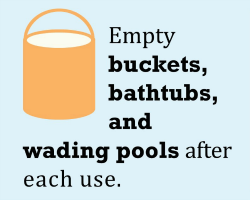 Outdoor water safety:
Outdoor water safety:
- Never leave a filled, open-top water container unattended. Whenever they’re not in use, be sure to completely empty any liquids in containers such as:
- buckets and pails used for cleaning or painting
- wading pools
- coolers with melted ice
- large water bowls for pets
- trash cans or recycling bins that may collect rainwater
- secure swimming pools, including large, inflatable above-ground pools and other temporary pools, should be surrounded by a fence on all 4 sides.
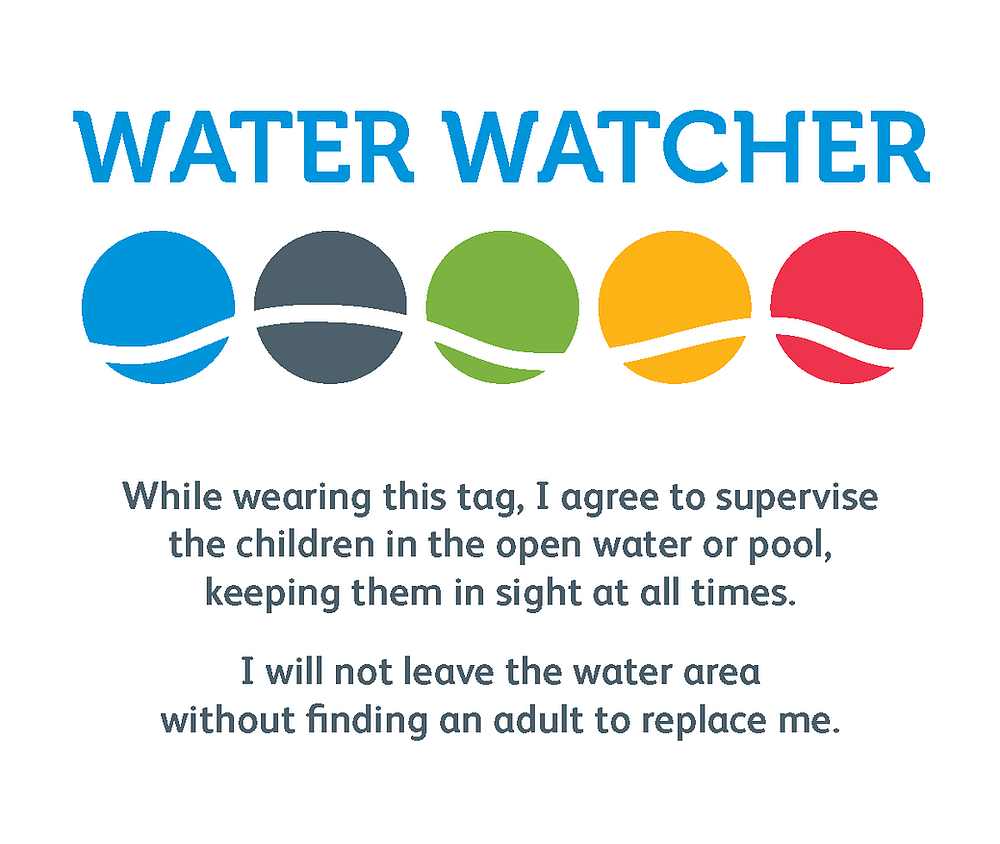 Pools:
Pools:
- Assign a qualified Adult or youth with life saving certificate to supervise children
- Ensure life jackets and flotation devices are used with supervision
- Ensure Life preservers are readily available
- Use a water watcher sign. Assign a “water watcher” to supervise at all times and ensure they know their responsibility.
- Pool fences should: be at least 4 feet high and have no opening under it or between slats more than 4 inches wide.
- Check the gate frequently to be sure it works and keep it always locked.
- Keep toys out of the pool area when not in use so that children are not tempted to try to get through the fence.
- Be sure to always cover and lock hot tubs and spas right after using them.
Use touch supervision
- Have a towel within reach so you can always keep a hand on your baby so that you are within arms reach at all times.
- Before your baby begins to crawl or walk, check your home and surrounding area for any other potential water dangers.
![]()
Water and electricity don’t mix
- Be sure to keep electrical cords, battery powered devices and other power sources away from water and out of the reach of children.
It’s important that you teach your children water safety!
- Teach children the guidelines, rules, and boundaries around water that they will understand and follow.
- HAVE FUN AND PLAY SAFE!
Why we love Eric Carle books to promote early literacy
in loving memory of Eric Carle
One of our favourite books to promote early literacy at Alpha’s Discovery Kids is The Very Hungry Caterpillar, by Eric Carle. In fact, it was the inspiration for our metamorphosis project last month. Amid our metamorphosis project, author and illustrator of this iconic children’s book, Eric Carle passed away on May 23rd, 2021, at the age of 91. Eric Carle will live on in our hearts and through his legacy of great literature.
The Very Hungry Caterpillar was among many fantastic Eric Carle books known around the world. Other beloved titles from Eric Carle include The Very Busy Spider, Brown Bear, Brown Bear, What Do You See? and The Artist Who Painted a Blue Horse.
For many educators, parents and children of all ages, his works have been a staple in their children’s literature collection. Carle’s incredible collection of work has earned him a variety of accolades, including the Children’s Literature Legacy Award.
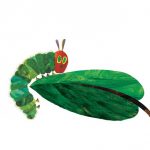
Here are three reasons why we love Eric Carle books!
1. Predictive Text
Predictive text builds confidence in young readers. In most of his early literacy books, the designated format repeats throughout the text and allows children to predict it. When young readers pick up on the pattern, you see the sparkle in their eyes. At first, they read along with you. Then, they use the pictures along with the pattern to feel like they are “reading”. This develops confidence right from the start. Be sure to point to each word as you read it to demonstrate one-to-one correspondence.

2. Life and Life Lessons
The Very Hungry Caterpillar is amazingly useful in so many ways. It creates a sensorial early literacy experience when children touch the holes on each page. When children engage their senses beyond listening during a literacy experience, they retain more knowledge. Any time that children are touching, feeling, and interacting with the text, is a win! Additionally, the very hungry caterpillar can be tied into many real-life topics and teachable moments such as the life cycle of a butterfly, eating healthy and the days of the week.
- The Grouchy Ladybug – teaches about manners and encouraging prosocial interaction to build connections with others in an appropriate way.
- Brown Bear, Brown Bear, What Do You See? is an all time classic that teaches children colours, and animal names in an abstract and imaginative way using unexpected colours like “purple cat” or “blue horse”
- Panda Bear, Panda Bear, What Do You See? and Polar Bear, Polar Bear, What Do You Hear? have the same predictable patterns. Panda Bear addresses endangered animals, which can be a great way to tie in social studies. You can identify where the animals in the book live on a map and talk about ways to help these animals by doing things like taking care of the environment.
3. The Illustrations are AMAZING!
Eric Carle’s art is distinctive and instantly recognizable. His artwork is created in collage technique, using hand-painted papers, which he cuts and layers to form bright and cheerful images. The brush strokes show texture and dimension and a signature creation that can only be connected to his unique style. A true work of art on every page!
These books inspired us to create our own book using his technique. Here’s what we did, and you can do this at home too!
- Paint an open-ended abstract picture.
- Ask the child to name their favorite animal.
- Cut out the painted picture into strips or shapes.
- Glue the pieces together in the shape of their favourite animal. They may need some assistance with this part.
- Add the text in the format “Child’s Name, Child’s Name, what do you see?
- Record the name of the animal and colour with the text. “I see a Colour Animal looking at me!”
- You can laminate the page and create more pages to make a book. Assemble the pages with a hole punch and binder ring.
Voila! You have your own homemade “Eric Carle” style book that your family will treasure! Our children love to make homemade books and keep going back to read them over and over again!

Take a look at our metamorphosis project video.










